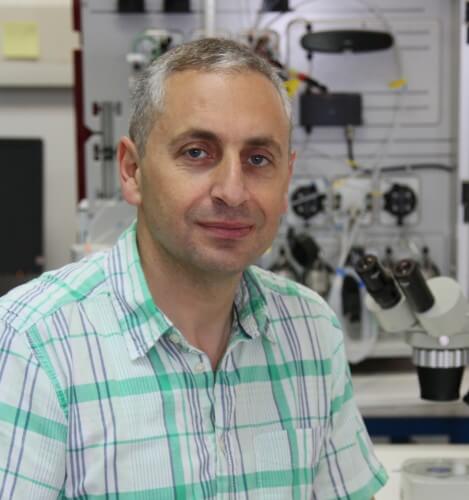Until recently, medical research in this area focused on the development of drugs that attack the virus proteins, but in view of the partial failure of these drugs, a new medical strategy was developed that focuses not on the viral protein but on its interaction with the host cell. This strategy is much more effective because the virus must use cellular mechanisms in order to reproduce successfully

The AIDS epidemic continues to claim the lives of millions around the world, as a result of the success of the HIV-1 virus in surviving and multiplying in the living cell. Despite the resistance of the attacked cells, and despite the use of drugs designed to eliminate it, the virus manages to acquire increasing resistance.
Until recently, medical research in this area focused on the development of drugs that attack the virus proteins, but in view of the partial failure of these drugs, a new medical strategy was developed that focuses not on the viral protein but on its interaction with the host cell. This strategy is much more effective because the virus must use cellular mechanisms in order to reproduce successfully.
The fear now, according to Associate Professor Akram Aliyan from the Faculty of Biology at the Technion, is the development of a new type of viral resistance: the virus, which takes advantage of the fact that in the host cell there are different mechanisms that can lead to the same product (redundancy), will carry out a self-mutation that will allow it to take advantage of a parallel mechanism, if the first one is blocked . "We hypothesize that the redundancy in the cellular pathways may represent a survival mechanism that allows the virus to take advantage of a wide variety of similar processes. This innovative idea emphasizes the multitude of options available to the virus, in the event that one of the ways is blocked for it, for example when the way is blocked by natural cellular mechanisms or artificial drugs, and even in other cases where it is better for it to bypass the obstacles of the cellular environment and different stages of replication."
Associate Professor Elian and research assistant Dr. Aili Marks present the gist of the innovative concept in an article appearing in the May issue of the Journal of Virology. Janine McCoffey, a student in the lab, illustrates the idea by drawing HIV-1 as an octopus whose arms represent different routes of takeover. The illustration appears on the cover of the issue (http://jvi.asm.org/content/89/12.cover-expansion.
An earlier article, published in the journal Cell Structure in October 2014, reviewed a new approach developed by scientists in Associate Professor Mishna Aliyan's laboratory for the study of AIDS. The researchers compared an important viral protein (integrase) present in both the HIV-1 virus and the FIV virus, which causes AIDS in cats, and discovered new differences that could help in understanding and predicting the development of resistance. In both viruses, the integrase inserts the DNA of the virus into the DNA of the infected cell and then replicates itself, thus allowing its spread throughout the body. "The virus is a kind of Trojan horse, which uses the host's genome to take over it," explains Associate Professor Mishna Aliyan. "Now we are researching in depth and trying to develop this idea, of the 'multiple ways of reproduction of the HIV virus', as a new strategy for the treatment of AIDS."
